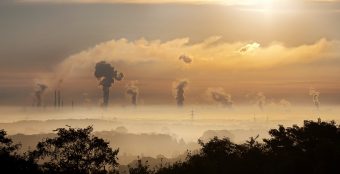
In relation to a new nationwide survey meant to ascertain the amount of environmental damage done by the last 30 years of rapid growth, China’s environment ministry has revealed that the number of pollution sources within the country has increased by over half in just the last 8 years.
Considering that such a large figure makes for bad PR, it’s interesting that the ministry has publicly reported as much — which makes one wonder to a degree whether actual figures could be somewhat higher.
It should be realized, though, that the ministry in question is an entirely new one — the Ministry of Ecology and Environment (MEE) — so perhaps the figures are actually accurate.
As explained by the head of the new ministry’s pollution survey office, Hong Yaxiong: “The goal for the census is to do thorough data collection so that it can reflect the extent of the pollution.”
Reuters provides more: “The government is currently conducting a second nationwide ‘environmental census’ aimed at identifying pollution threats throughout the country. The first was published in 2010. … The environment ministry absorbed new duties formerly held by the land, water, and agriculture ministries as part of the biggest government shake-up in years. It will also now be in charge of climate change and carbon emissions.
“The new census is due to be completed in 2019. According to preliminary estimates, the total number of pollution sources now stands at 9 million, including 7.4 million industrial sources, 1 million in rural areas, and 0.5 million from urban locations, Hong said.
“The first census conducted by the National Bureau of Statistics from 2007 to 2009, uncovered 5.9 million sources of pollution nationwide, with the industrial provinces of Guangdong, Jiangsu, and Zhejiang at the top of the list. The survey also identified 209.8 billion tonnes of waste water, 63.7 trillion cubic meters of waste gas emissions, and 3.852 billion tonnes of industrial solid waste nationwide.”
Interestingly, further aspects of the survey will involve the widespread examination of common soil pollution sources (sources of lead, mercury, and cadmium, amongst other compounds). Considering the scale of the country’s population, and the widespread contamination and destruction of much of its farmland as the result of industrialization, such a survey would seem prudent.
Source: cleantechnica.com

